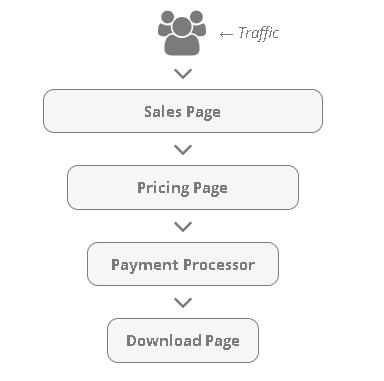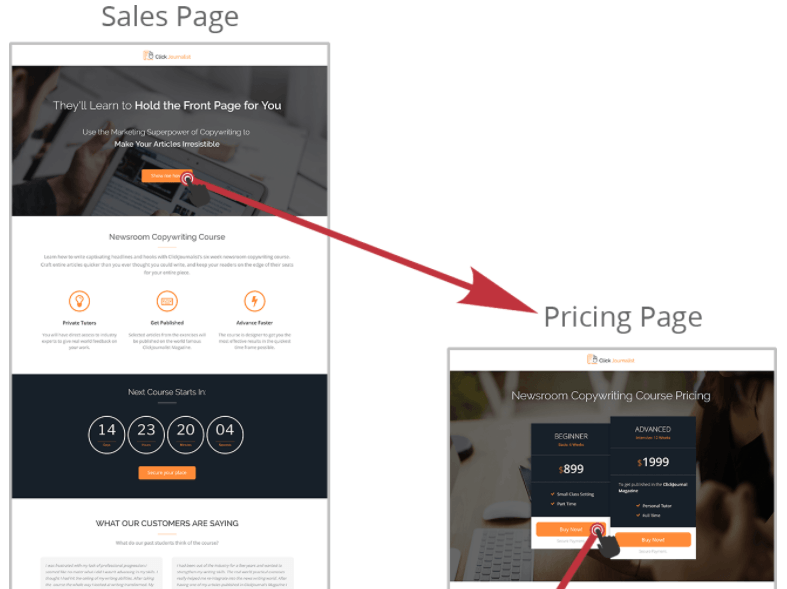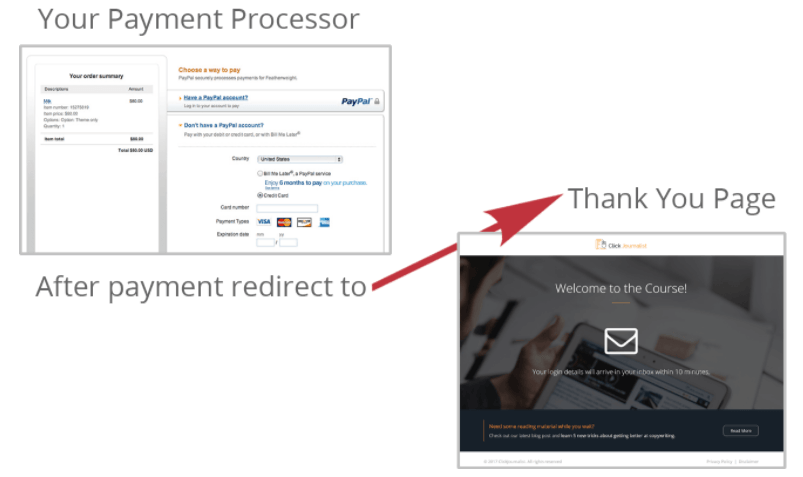Today, I want to show you how to build your first sales funnel using Thrive Architect.
For those of you who are new to sales funnels, it’s essentially a sequence of steps that your potential customer will take in order to go through some sort of conversion. For example, you can convert them to join your email list and have them go through your email sequence, which will then lead to a call to action to purchase a digital or physical product or anything that you would like to offer.
One of the things that will help facilitate a conversion is having a sales funnel set up on your website.
Watch the video:
How can you set up a sales funnel on your website?
Thrive Themes just came out with a new set of templates in their Thrive Architect plug in last November of 2017. Using this, you can set up a sales funnel landing page set in your website.

This is the flow that your potential customers are going to go through.

First, you have your sales page with a description of what you’re offering and a call to action button. If they click on that, it will redirect them to the pricing page. This page could also have a Scarcity countdown timer with another call to action button also going to the pricing page.
Once your customers are in the pricing page, you can offer them different price packages. You can offer a premium program or have a less expensive option. You can also do a membership with different package tiers to really give your potential audience options. There’s also an option to add in testimonials as social proof. There’s also a button to Buy Now or to Secure Your Spot.

If they click that, they will then go to your payment processor. This page can be whatever payment processor you’re using, such PayPal, Stripe, or even redirect to your LMS payment processing page in Teachable, Thinkific, Rainmaker, or LearnDash.
A lot of LMSs come with their own sales pages, but the great thing about using Thrive Architect is being able to see data as far as AB tests to measure what you should be focusing on in your marketing campaign. This can greatly help you see what works and what you need to improve on, which are not readily available in most LMS offered sales pages.
After they’ve made a payment, you can redirect them to any URL, such as your Thank You page or back to your course dashboard.
What are the advantages of using sales funnel templates?
The biggest challenge in building a sales funnel is getting all the pages laid out, doing the graphics, and getting the copy. A lot of people, especially those without coding knowledge or web designing experience, really struggle with putting it together. Even with these set of skills, it can still take a long time. It can get frustrating, especially if you do it all yourself, to the point that some might give up.
Using tools like Thrive Architect can make things a lot easier and you can just drag and drop elements. You can just click and edit the text that you need to fit your business. It’s really simple, and there’s so my other page builders out there. You really can’t go wrong with trying at least one of them. The reason why I really love Thrive and recommend it is because it’s a really great page builder focused on marketing and conversions.
So, why is being marketing and conversions focused important?
When you have traffic and people visiting your website, it’ll be easier to turn visitors into email subscribers. Then, you can turn those email subscribers into customers.
I hope this has helped you consider how to get your sales funnel up and running on your website. Give Thrive Architect a try and build out your own funnel. If you have any questions or suggestions, leave them in the comments below. 😊

Leave a Reply